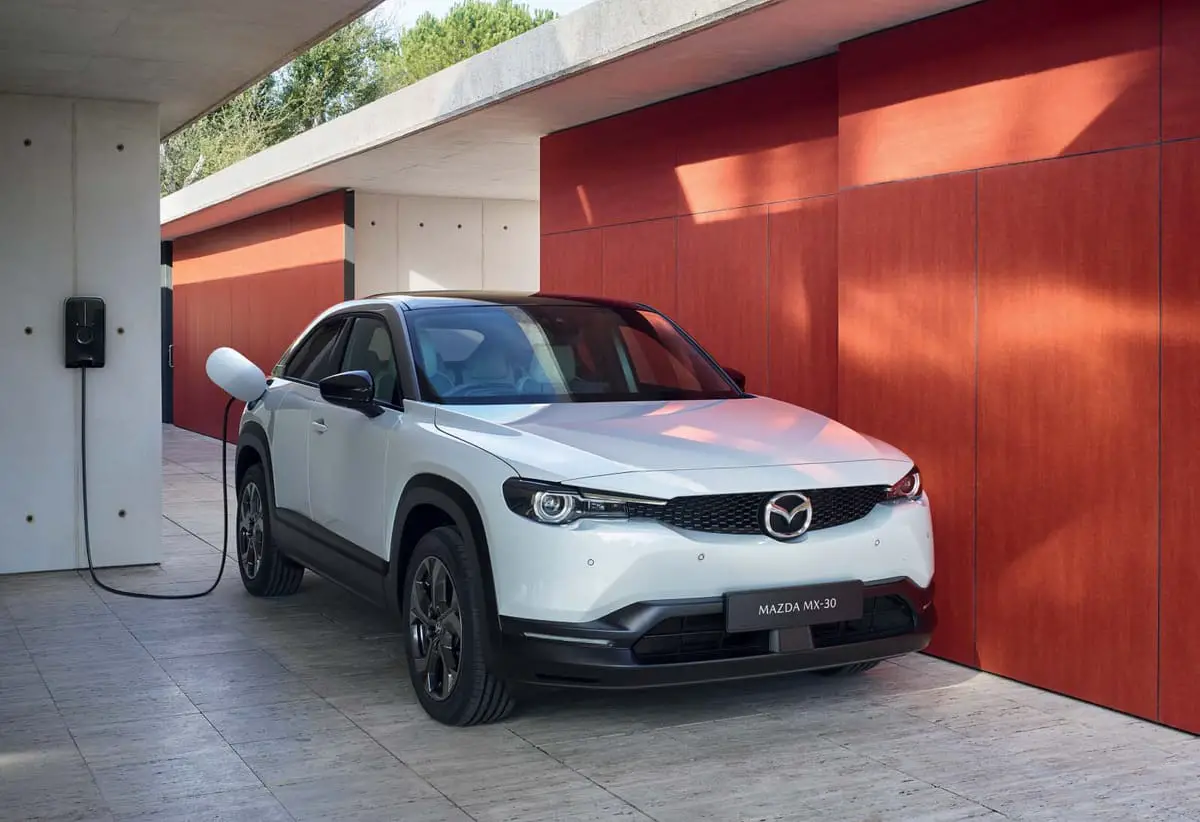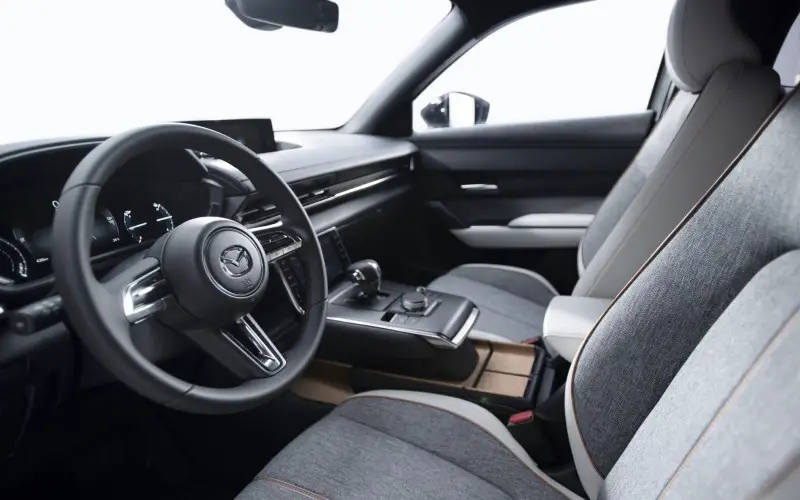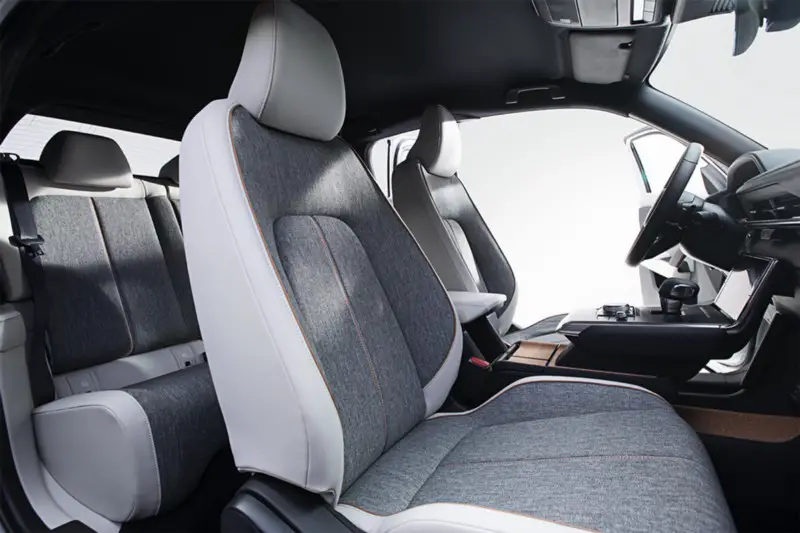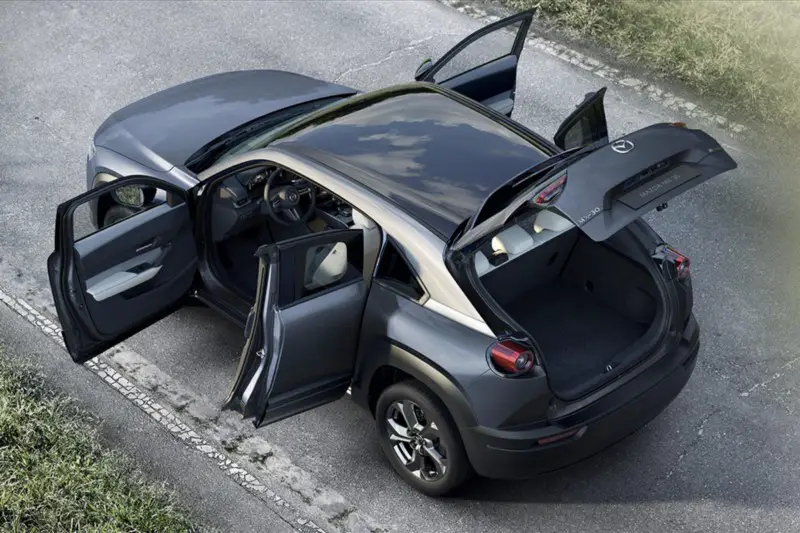2020 Mazda MX-30
The new MX-30 is Mazda’s first production EV. The MX-30 debuts Mazda’s pure-electric e-SkyActiv platform, along with a number of new…

The new MX-30 is Mazda’s first production EV. The MX-30 debuts Mazda’s pure-electric e-SkyActiv platform, along with a number of new interior technologies likely to filter through the rest of the Japanese brand’s line-up in due course.
The all-electric MX-30 is part of Mazda’s plan to offer an e-SkyActiv (hybrid, plug-in hybrid, or fully-electric) vehicle in each of its model lines by 2030. That includes everything from the Mazda 2 through to the dual-cab BT-50 replacement.
The MX-30 is powered by a 35.5-kilowatt-hour lithium-ion battery. The usual Level 1 and Level 2 charging options are available, as well as a combination-spec DC fast-charger. The vehicle is capable of charging up to 6.6kW using an onboard AC charger and can charge using a DC fast charger over a CCS Type 2 Combo or a CHAdeMO plug depending on where in the world you are.
Working backward from the claimed 40 minute charge time on DC and 4.5 hour charge time on AC, the MX-30 likely has a 35 kWh battery on-board with 50kW DC fast charging capability, allowing a driving range of around 200 km. Earlier prototypes of the MX-30 built within a CX-30 body featured a 105kW electric motor that produces 264Nm of torque.

The interior materials Mazda has extensively used materials like cork derived from excess materials from wine stoppers around the center console, soft material on the dashboard, and doors made of recycled PET (polyethylene terephthalate) bottles, along with new seat fabric design. Two passengers can sit comfortably up front, with three rear seats accessible via the rear-hinged side doors (which Mazda calls “freestyle doors”). The automaker says the front doors can open 82 degrees, while the rear doors open to 80 degrees, making it easier to get in and out of the MX-30. The removal of a B-pillar makes it easier for adults to climb in and out of the back, too.
The MX-30 gets a 7-inch touchscreen below the dash, which is where the climate controls are found. It lives on a floating console with storage space underneath, which also houses the electronic gear shifter and control knob for the infotainment screen atop the dash.

Given Mazda is positioning the MX-30 as a technology leader, it’s likely this screen will replace the traditional manual HVAC controls used across the rest of its range. The floating center console also features a rotary dial for Mazda’s latest MZD Connect infotainment system, along with storage behind the console with 2.5A USB connectivity and an AC outlet capable of supplying up to 150W of power.
Open the cargo area and Mazda claims there’s enough room to fit four carry-on cabin bags, with sufficient underfloor storage for small items such as the charging cable.
In terms of security, Mazda has Smart Brake Support (autonomous emergency braking) gains Turn-Across Traffic detection, which uses a millimeter-wave radar and a forward-facing camera to detect oncoming traffic and brake if the driver turns across oncoming traffic.

A ‘Road Keep Assist’ system uses a forward-facing camera to detect soft road edges, grass, and other road surfaces where there isn’t a line marking in place to prevent the vehicle from leaving the road if the driver doesn’t intervene.
Finally, the addition of a 24Ghz mill wave sensor allows the functionality of Blind Spot Assist to be improved. The system can now prevent the driver from merging into traffic approaching from the rear if they don’t notice the blind-spot warning sensor located on the wing mirror.




